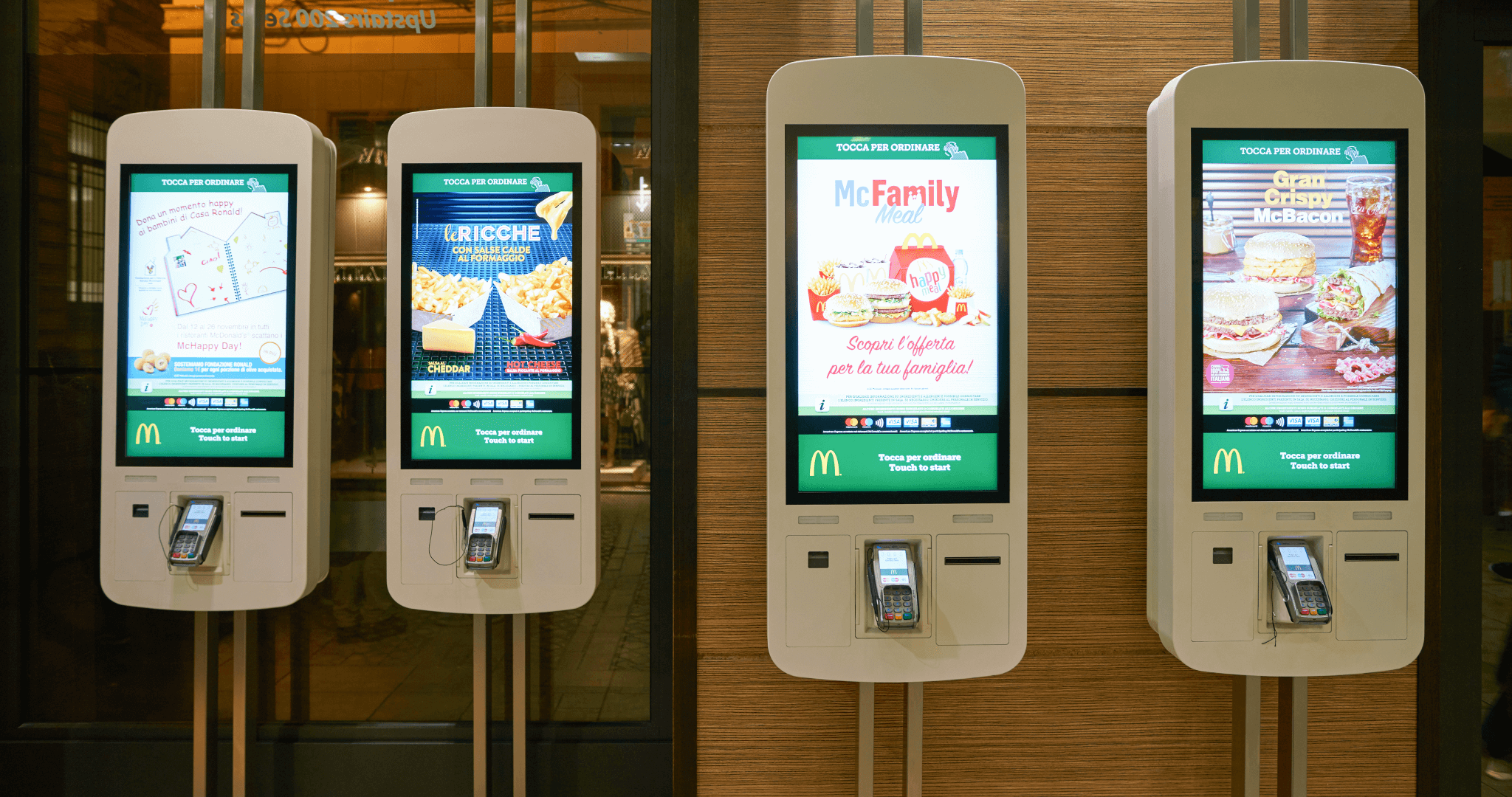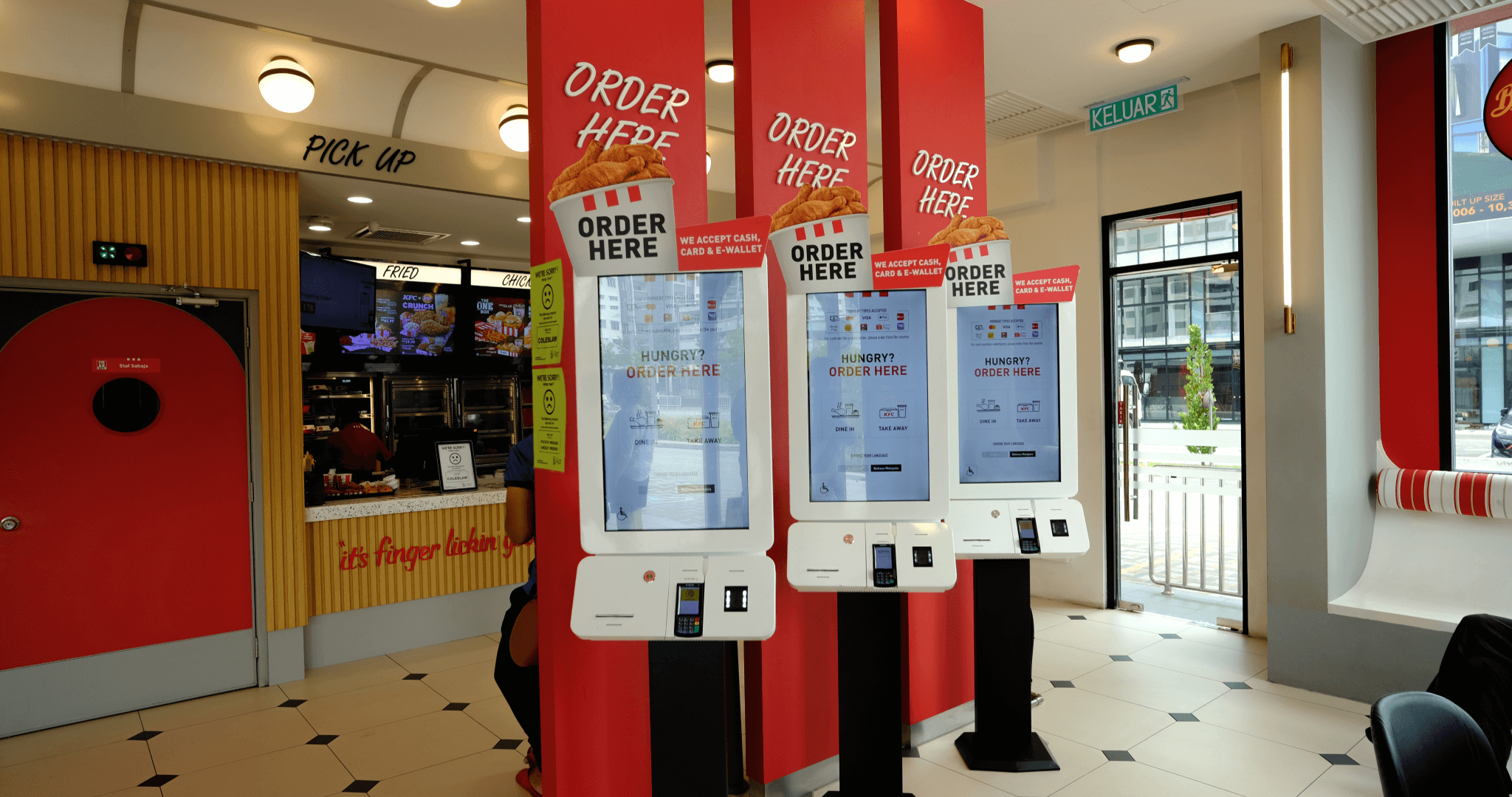Enhancing Customer Experience in Fast-Food: The Rise of Self-Service Kiosks
Posted by Emma on 5th Jan 2024 Reading Time:
In the fast-paced world of fish and chips, quick service and fast-casual dining, the significance of customer experience cannot be overstated. While the quality of food and service remains paramount, the advent of self-service kiosks is reshaping the landscape of customer interactions. These technological marvels offer more than just a modernised facade; they are pivotal in elevating customer satisfaction, streamlining operations, and bolstering sales.
 Tdorante10, CC BY-SA 4.0, via Wikimedia Commons
Tdorante10, CC BY-SA 4.0, via Wikimedia Commons
Unpacking the Benefits
Personalised Customer Experiences:
Self-service kiosks offer a unique blend of convenience and personalisation. Customers appreciate the autonomy to browse menus, customise orders, and make payments without feeling rushed or judged. For instance, a member card integration can display personalised menu recommendations, enhancing the customer's experience. This level of personalisation is not just a perk but a necessity in today's market.
Increased Efficiency and Sales:
The impact on operational efficiency and sales is tangible. Self-service kiosks reduce order processing times, leading to shorter queues and a smoother flow of service. A striking statistic from Panera Bread, theAmerican bakery-café group, in 2022 revealed that 50% of its sales came from digital platforms, including self-service kiosks. Moreover, customers tend to spend more when using kiosks, with average order values increasing by 10%.
Appealing to the Younger Demographics:
Particularly among younger generations, the preference for kiosk usage is evident. A staggering 91% of Gen Z consumers reported they would frequent a restaurant more often if it offered self-service kiosks. This preference is not just a trend but a clear indicator of the shifting expectations of the consumer base.
Key Findings
Self-Service Kiosk Popularity:
- 60% of customers would choose a restaurant with self-serve kiosks over one without.
- 91% of Gen Z say they would visit a restaurant more often if kiosks were available.
Order Value Increase:
- Average order value increases by 10% when customers use self-service kiosks.
- Panera reported that 50% of its sales come through digital means, including kiosks.
Digital Ordering Trends Post-COVID-19:
- 72% of people say their use of digital ordering increased due to COVID-19.
- This increase rises to 85% for Gen Z and 83% for Millennials.
Customer Preferences and Behaviours:
- 64% of consumers would order more via kiosks, with 92% for Gen Z and 82% for Millennials.
- 61% would spend more via kiosks, 90% for Gen Z and 80% for Millennials.
- 64% would visit more often if kiosks were available, 91% for Gen Z and 80% for Millennials.
Self-Service Checkout in Retail:
- 85% of consumers believe self-service checkouts are faster than traditional cashier checkouts.
- 67% have had a self-service checkout kiosk not work for them in the past.
- 65% of consumers would prefer to use their smartphone to checkout and pay.

Kiosk Usage:
Nearly half ( 48.7%) of shoppers use self-checkout "basically all the time" when available.
In the past year, 36.3% of respondents saw a "major increase" in using self-service checkout kiosks.
34.1% anticipate a "major increase" in their use of self-checkout options in the following year.
Implementing Self-Service Kiosks: A Step-by-Step Guide
Strategic Planning:
Embarking on the journey of integrating self-service kiosks begins with a strategic plan. Considerations include:
- The location of kiosks.
- The balance between human staff and automated services.
- The overall objectives and budget for the initiative.
Choosing a Self-Service Kiosks Provider:
Choosing the right provider for both hardware and software is crucial. Factors such as the size of the screens, payment hardware, and software customisability play a significant role in the effectiveness of kiosks.
Want to talk to some self-service kiosk providers? We have put a short list to get you started.

Operational Integration:
Seamlessly integrating kiosks into the existing operational structure is vital. This includes ensuring staff adaptability to the increased order flow from kiosks and tracking performance metrics to gauge the impact of the technology.
Overcoming Challenges
Despite the advantages, challenges such as technological glitches and cleanliness concerns must be addressed. Approximately 67% of customers have encountered issues with self-service kiosks. Regular maintenance and staff training in troubleshooting are essential to mitigate these challenges.
The Future Landscape
Integrating self-service kiosks is not just a fleeting trend but a cornerstone of the future of quick-service restaurants. With the growing preference for digital ordering, especially post-pandemic, kiosks are critical in meeting customer expectations and staying competitive.
Conclusion
The adoption of self-service kiosks in quick-service environments offers a multifaceted advantage. From enhancing customer experiences to improving operational efficiency and increasing sales, these kiosks are more than just an accessory; they are a strategic imperative in the evolving hospitality industry landscape. Suppose you have made it this far and want to know more. In that case, you can read more about how the digital transformation has gone for McDonald's and how Burger King is now adopting self-service kiosks.

